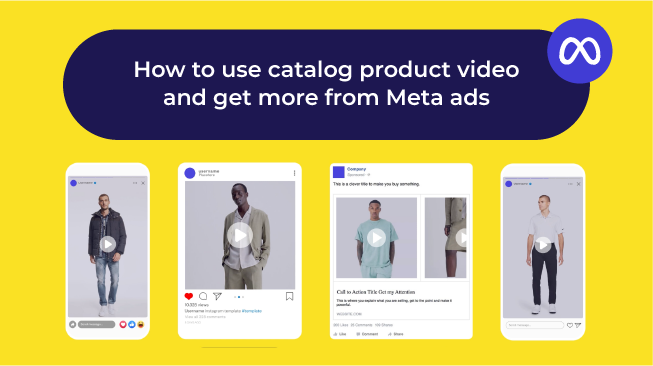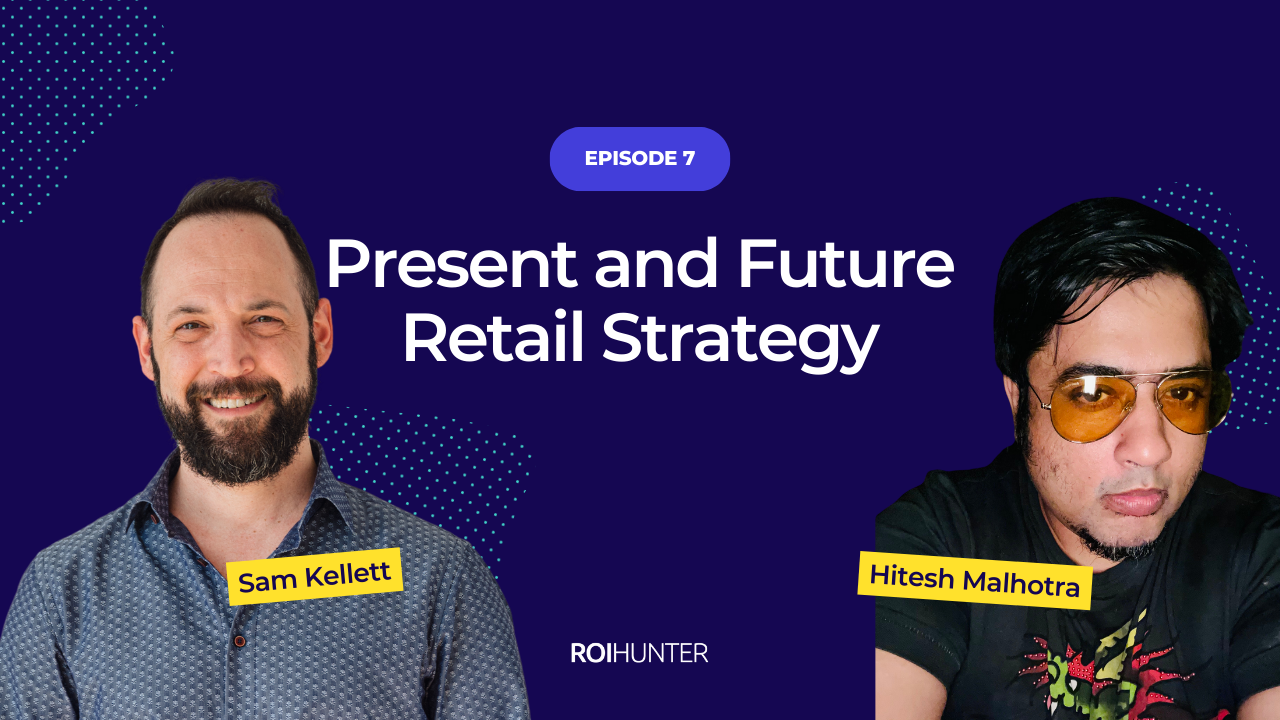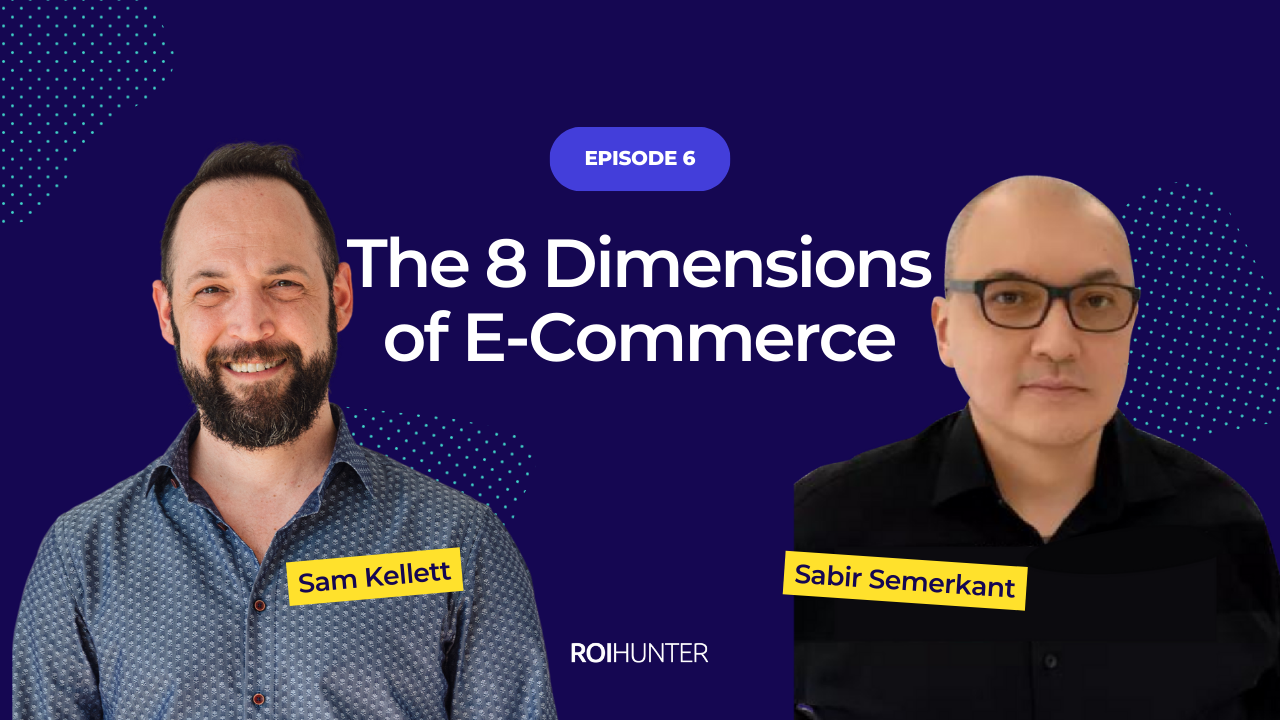Marketers love segmentation and for good reason. While it’s likely that you’re already using customer segmentation, there is another highly valuable type of segmentation that marketers should consider, and it’s called product segmentation.
This article will give a brief overview of customer segmentation, define product segmentation in a way that makes sense for marketers, introduce the PPM (Product Performance Management) platform, and offer insight and examples into how your marketing team could use the PPM platform to implement product segmentation into your everyday marketing strategy.
If you want to skip ahead to learn about product segmentation, click here.
Table of Contents
What is customer segmentation?
Segment products with a PPM platform
Why product segmentation is important
What is customer segmentation?
Customer segmentation is the process of splitting your customers into different groups based on distinct traits (e.g. purchasing habits, interests, etc.) and factors (e.g. income, age, and gender) that they share.
The process of customer segmentation makes it easy to personalise your marketing efforts to the interests and needs of different groups, which increases the chance to gain the precious first purchase and elusive second one. Customer segmentation also builds up customer loyalty, ultimately leading to higher long-term return on investment.
With customer segmentation, your business can:
- Create targeted ad campaigns that convert segmented customers
- Improve your customer support and customer service
- Increase loyalty by customising your content and interactions
- Communicate with segmented customers through their preferred channels
- Find new opportunities for improvement
- Identify who your most valuable customers are and why
As you know, customer segmentation is essential for your e-commerce business’ marketing strategy; you can take your customer segmentation success to the next level by complementing it with strategic product segmentation.
What are product segments?
Product segmentation is broadly defined as a strategy where businesses split their products into multiple groups that have similar attributes or characteristics and serve a similar market.
However, we believe that product segmentation is most advantageous when it’s:
- Based on your product performance rather than on mere categorical definitions or customer segmentation
- Based on strategic intent such as generating demand for new product collection
- Automated
In this modernised definition, successful product segmentation is best performed when based on the analysis of a retailer's product performance through product performance data. Product performance data gives you additional options to run successful campaigns and can be used independently from customer data or along with it. It offers insight into the performance of each of your products through metrics such as margin, stock volume, delivery dates, revenue, number of transactions, and so on.
It is important to note that product segmentation does not necessarily equal a product set, but rather should be part of its constitution. A product set is what dynamic ad algorithms pull from when deciding on a product to promote. In marketing terms, product segmentation should be considered part of the marketing metrics that lead you to create product sets.
Though there are different ways of grouping products to make your inventory more manageable and insightful, the easiest way to accomplish this is through a PPM platform.
Segmenting products with a PPM platform
If you’re going to take advantage of product segmentation, you should do it right, right?
Taking a look at the definition of product segmentation in the previous section, it becomes clear that there are prerequisites for segmenting your products. You need to have access to your product performance data, and you need to have the correct data sources connected or the correct fields mapped in the inventory.
With the right tools (and a background in data analysis) you could do it yourself, but if you want to save time and a lot of effort, that’s where the ROI Hunter PPM platform sets the stage. It is the first of its kind and was created to connect e-commerce retailers to product performance data and enable them to use it effectively.
With the PPM platform's unique tool, Product Insights, you can gather your product data (margin, chance of return, stock levels, etc.) from Google Ads, Google Analytics, Facebook, and custom sources, and combine it, along with your product catalog, into a single source of truth. You can then use these data points to segment your catalog and create highly specific product sets for your goals.
Why product segmentation is important
Though DPAs are a huge win for retailers, the algorithm is less effective when choosing products to promote from across your entire site. In fact, Facebook’s algorithm focuses about 50% of all impressions on about 1% of the items in the catalogue.
These products are also not chosen based on the metrics most important to you, such as profitability or ROAS (return on ad spend). Generally the products that do get promoted are those with the highest engagement, which in turn leads to those same products being promoted over and over.
To combat this, you can create separate product sets for each campaign, giving you control over which products get promoted. You can use the PPM platform to quickly filter your catalogue to create these product sets, finding the best products for each campaign based on their performance.
Now that you have the what, the how, and the why for segmenting your products, I’ll go over the top segments you should be using.
The best product segments to use
There are many ways to segment your products. The list below includes the segments from which we’ve seen the most success.
Bestsellers
Bestseller reporting in ROI Hunter:
Your bestsellers are the items in the top 10-20% of your catalogue in terms of total revenue across all channels. Typically, the top 10% of products in your catalogue produce about 80% of your revenue.
Top campaign for bestsellers
Bestsellers are a strong choice for scaling campaigns to acquire new customers.
Lookalike audiences are a Meta segmentation tool used to find potential customers whose interests are similar to those of your existing customers. As your current customers are the ones responsible for making certain products your bestsellers, it’s probable that a similar audience will also be interested in purchasing these same items. That’s why it’s important that your bestsellers are the first items your prospective customers should see.
Bestsellers campaign example
A great example of a successful bestsellers campaign is Sephora. Sephora found their top 20% best-selling products from Google Analytics, then created a product set from them for Facebook. This separate product set enabled Sephora to control which of their products received promotions during Black Friday week prospecting.
Sephora’s bestsellers campaign resulted in them spending 17% less on promotion, increased their revenue and number of transactions by 14%, and boosted their ROI by 43%.Trending Products
Trending products are items that are popular right now.
While companies use Google Trends data to get a rough estimate of trending search terms, they don’t tell you anything about the search volume.
To discover current trends, you can check out product page and category views. Google Keyword Planner can also help you estimate the volume of searches for particular keywords.
Additionally, if searches are performed on your site, you can analyse the keywords used to help you find out if people are searching for products or services that you might not have (e.g. the search results show “0 results” or so few results that customers decide not to continue shopping with you).
Another option to find out what’s trending is through the best sellers report in GMC (Google Merchant Center). Here you can find what products and brands are the most popular on the market over a given period of time on Google Shopping Ads. These products can be sorted by category and/or country.
Top campaign for trending products
While you could use the methods above to pinpoint trending products, you can locate trending items better with ROI Hunter's PPM platform. The PPM platform enables you to integrate all the data from across your channels into one place, making it easy to filter to find trending products based on the number of impressions they received in Google Analytics over a certain period of time.
You can then automatically promote trending items by creating a product set that automatically updates with the items that are currently trending, ensuring that the top trending products are the ones that always get promoted.
Also, since clicks for trending products tend to be quite expensive on Google, you can use the information that a product is trending and leverage this to bid on it on Meta, where clicks are still cheaper.
Trending products campaign example
Life Style Sports was looking to run more effective Facebook promotions.
To accomplish this, they used the PPM platform to gather all of their product-level data into a single source of truth.
Using this newly integrated data pool, Life Style Sports created a product set for trending products based on Google Shopping impressions from the past seven days.
The results: CPA (cost per action) on Facebook dropped by 87% and CTR (click-through rate) on their Facebook promotions increased by 287%! In addition, their ROAS (return on ad spend) jumped by a staggering 515%.
Dead Stock
Dead stock is unsellable inventory. The longer you hold onto your dead stock, the more it will depreciate in value, and it may even need to be written off as a loss. Also, the more you spend on promoting your dead stock, the more it drains your resources and actively hurts your profitability.
By using your product performance data within the PPM platform to locate your longtail (e.g. the items that are not bestsellers), you can find which of your items are dead stock or at risk of becoming dead stock, based on their performance.
Top campaign for dead stock
Once you’ve found your dead stock items, you can exclude them from the campaigns you’re running, reducing your bounce rate and improving your profitability.
Exclude low and out-of-stock variants
Fashion e-commerce businesses offer products in multiple sizes and colors. However, there are often times where the most popular sizes are sold out or almost gone, yet less popular sizes (e.g. extra large/small) are still in stock. The same goes for colours (e.g. your navy shirts are sold out).
Despite these variants being out of stock, these products still get promoted, losing you money and lowering your ad relevance.
This happens because Google and Meta do not directly identify any qualitative changes in the product (sold out sizes/colours), so they need to wait for enough conversion data to catch up, leading to slow algorithm adjustments. Until the algorithm learns the reason for the lack of conversions, up to 2-4 weeks can go by, resulting in avoidable performance loss.
And although these ads might continue to drive some traffic, the ads will have high bounce rates due to your business “not having my size.” The customer then gets caught in a retargeting loop as they will keep seeing this product over and over again while you continue to spend money on irrelevant ads.
Top campaign to exclude low and out-of-stock variants
In order to solve the problem of promoting low and out-of-stock products, you can integrate stock-level data into the PPM platform, along with your catalogue. By gaining access to and analysing your stock-level data, it is easy to spot if an item in a product set is close to running out. To measure this, the concept of the Stock Out Score (SOS) was instated.
Stock Out Score = variants in stock / total number of variants per product
So for an example, let’s say you sell socks and have 10 different variants (colours, sizes, etc), but only 2 of those variants are in stock. That would make your Stock Out Score 20%. Easy math, right?
Once all of your items have been assigned a Stock Out Score, you can create automatic rules to stop them from being promoted if too many variants are unavailable.
Low-stock variants example
Max Fashion’s dynamic ads were not excluding items with low and out-of-stock variants. To fix this, they used the PPM platform to collect their product-level data and provided ROI Hunter with a Google Sheet of all their size/stock-level data, which was added to Product Insights.
With the combined data, it was easy to filter Max Fashion’s catalog to find all products with > 70% of sizes still available. Max Fashion then used these insights to create new product sets and revise their old ones.
By excluding low and out-of-stock variants, Max Fashion’s campaign resulted in a 45% drop in cost per session and a 93% lower bounce rate. Their average session length also increased by 14%.
Special promotion products
The process of choosing products for special promotion (e.g “Wednesday exclusives,” “Top daily deals,” etc.) is usually manual and iterative. It’s not unheard of for teams to spend an entire day finding the right product to promote and doing all the other nitty gritty tasks that go along with creating manual ads.
This highly inefficient process wastes a ton of time for everyone involved and can lead to miscommunication across departments, especially when it comes to daily promotions.
Top campaign for special promotion products
To improve your system for special promotions, you can connect your product and custom data to the PPM platform to find the perfect items to promote based on their performance, instead of manually selecting these items.
By adding rules to your special promotion product set, you can pre-determine the sort of products that will be selected for promotion, automating the process.
ROI Hunter’s TEDI (Template Editor) then lets you take the campaign to the next level: you can automate badges, banners, and prices (e.g. free shipping, 20% off, SALE) to appear on the promotions based on the attributes of the featured product.
By automating these changes, you save valuable time that can instead be spent on planning or analysis.
A special promotions example
Imaginarium wanted to enhance their dynamic campaigns, so they used the ROI Hunter template editor, TEDI with conditions, which enabled them to automate product badges for their items. These badges included an “EXCLUSIVE” badge that generated for any products under the official Imaginarium brand, and a “SALE” badge that generated whenever there was a sale price lower than the standard price.
TEDI turned out to be a huge success. Imaginarium’s campaign resulted in a 72% higher conversion rate than previous campaigns and their overall ROI increased by 115%!
Final thoughts
While customer segmentation is extremely important, you should also invest resources into product segmentation. With the addition of product performance data, you can create highly detailed segments based on your specific goals.
The best place to connect your product performance data with your native and custom sources is a PPM platform. With ROI Hunter, you can segment your products into different categories such as bestsellers, dead stock, low and out-of-stock variants, special promotions, and more.
To learn more about how to take full advantage of your product performance data, check out this free e-book.



